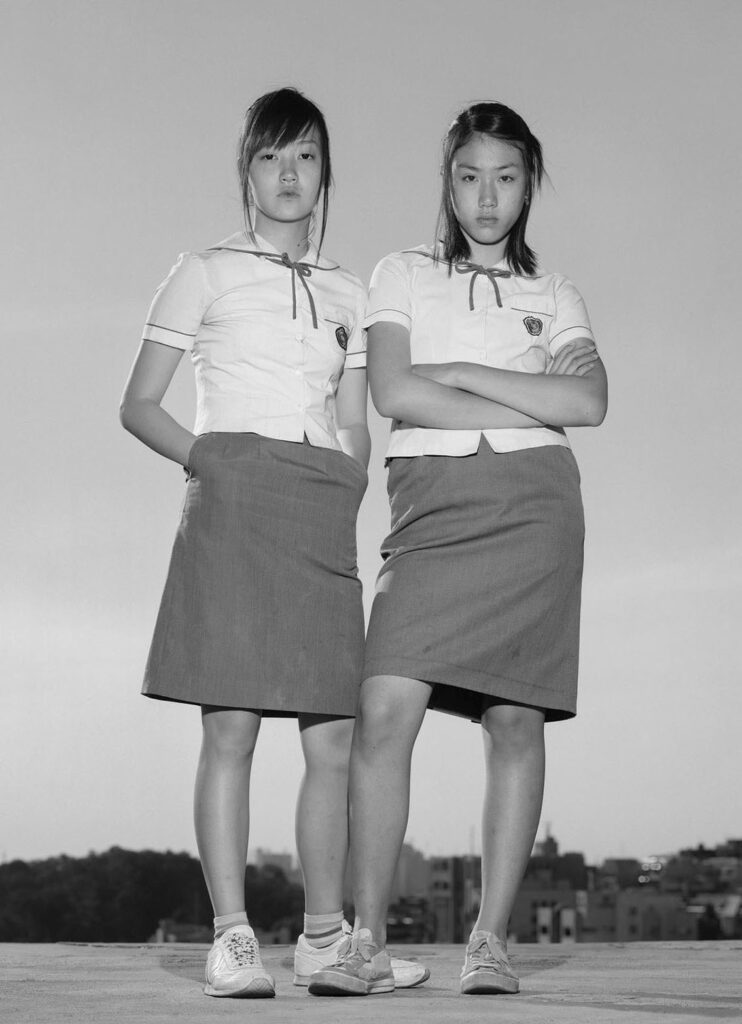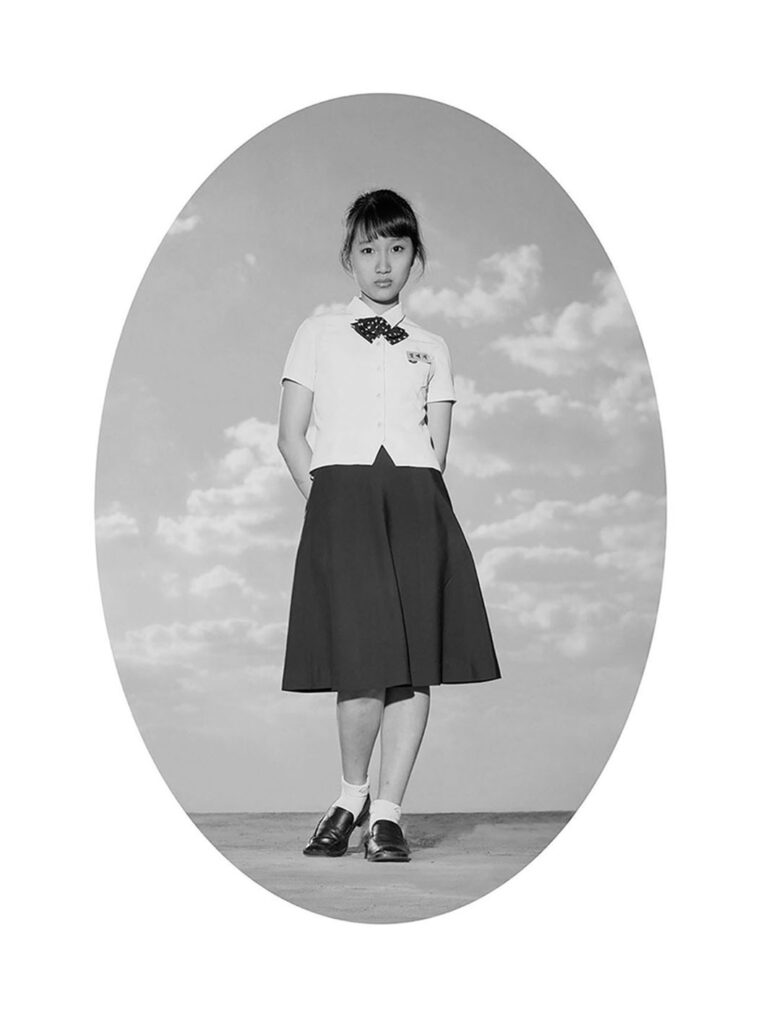Breaking out of high school girl mold
[코리아헤럴드 2004-03-28 13:32]
Photographer latches onto vulnerability, displays it ambiguously for viewers
By Iris Moon
Photographer Oh Hein-kuhn focuses his lens on the forgotten strata of Korean society. From washed-up actors to flashy middle-aged women, Oh reveals the labels Korean society assigns individuals. Despite his sociological intentions, a thick cloud of controversy swathes his work. The Korean media has tended to focus on the touchy nature of his subjects. And while his newest series, “Girl`s Act,” will be no exception, the controversy stems not from the photographs themselves, but the context outside of the pictures. Featured in his show at Ilmin Museum of Art are precocious high school girls in uniform. With windswept hair and sultry lips, they attempt to strike the poses of actresses and models.

Oh first received heated criticism for his “Ajumma” portraits in 1999 at ArtSonje Center. Women`s groups protested the photographs, saying the middle-aged Korean women had been stereotyped and portrayed as tasteless and gaudy creatures. “I got a lot of criticism for that. But my intention was to show how helpless and isolated they were. I was actually on their side,” said Oh at a preview for his Ilmin show. It`s harder to discern the photographer`s intention in his latest series. The show includes full-figure portraits of the teenage girls, group photos and multiple images that look like film stills. There`s a cinematic effect to the photographs, as the girls tower above open fields with large patches of sky and tiny buildings in the distance. Some of the photos are in elegant circular shapes, reminiscent of “tondo” paintings popular with artists like Raphael and Botticelli during the Italian Renaissance. When Oh first started his series in 2002, he wanted to shoot ordinary high school girls he met on the street. Yet after incurring problems with a law that bans photographing minors without their parents` permission, he turned to the high school
students at MTM, an entertainment and acting school whose agents hold the rights to their images. The girls` professional training is easily discernable from their photogenic poise. In contrast to his harsh black-and-white “Ajumma” series, Oh uses mid-range gray tones in “Girl`s Act,” suggestive of the gray areas of his subject matter. These sitters are neither children nor adults. The girls` cookie-cutter uniforms don`t seem to match their adult facial expressions, which range from come-hither looks to wistfulness and languor. Tiny silver bracelets, mosquito-bitten
knees and sneakers betray their real ages. Oh said the aim of his project was to reveal how society had created idealized images of what teenage girls should look like. “They watch the media, the TV, the Internet and they`re really receptive.


That`s how they learn to act a certain way and we`re the ones who project those images on them. You can really see the strong influence of society,” said Oh, who has worked in film and fashion. Perhaps one of the most unsettling aspects of Oh`s images is the shaky relationship between the viewers and the girls. As serialized portraits, Oh`s project generalizes instead of highlighting the uniqueness of each individual. It`s also difficult to tell whether these are documentary photographs or headshots for budding actresses. And despite the fact that his sitters know they`re being shot by a photographer, they seem to be unaware of the implications of their poses. As in acting classes, they are simply performing a role they`ve been assigned. There`s nothing particularly startling about the series. It`s the lives these girls lead outside of the photographs, suggested by their charming, precocious
gazes that invite disturbing thoughts. They seem to be childishly attempting to break out of the teenage mold of pimples and late-night cram sessions, only to be led into the glamorous yet scary world of adults. Oh seems to have latched onto the vulnerability that surfaces in each of the portraits, and holds it out ambiguously for viewers to judge at their will. Oh himself seems uncertain exactly what his images are intended to suggest. “I`ve never specifically been concerned with the social function of my pictures or my role. Of course, it still worries me.” Perhaps the biggest question is whether, in the process of trying to uncover the stereotypes and labels placed on individuals, he is perpetuating them in the minds of viewers. The controversy
surrounding his work will no doubt fuel interest in his young subjects. Oh knows he treads a thin line between the socially acceptable and the taboo. And while he may not have the answers to societal ills, his works continue to provoke heated questions. “Photos are always interrogative. They are always questioning.”
“Girl`s Act” runs until May 2 at Ilmin Museum of Art. Call (02) 2020-2055 for more information. ([email protected])
© 1989-2024 HEINKUHN OH